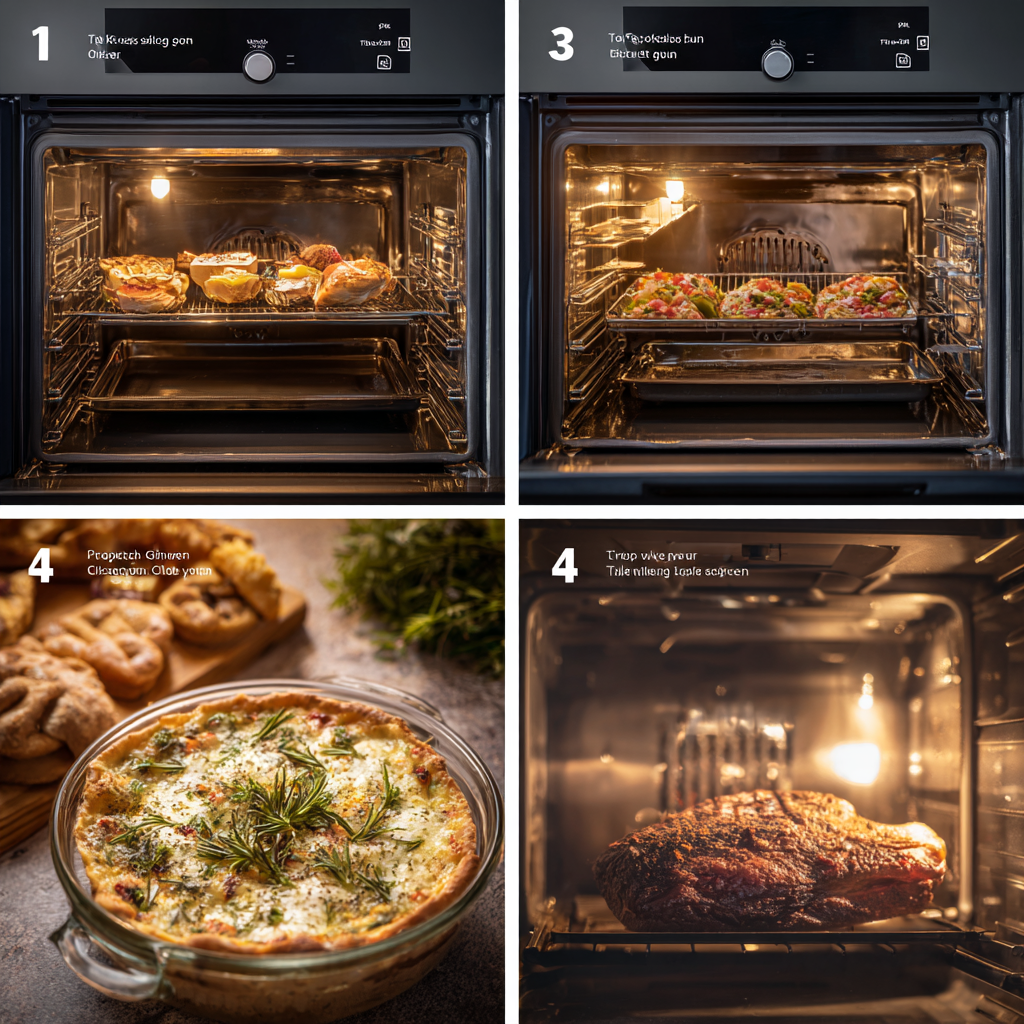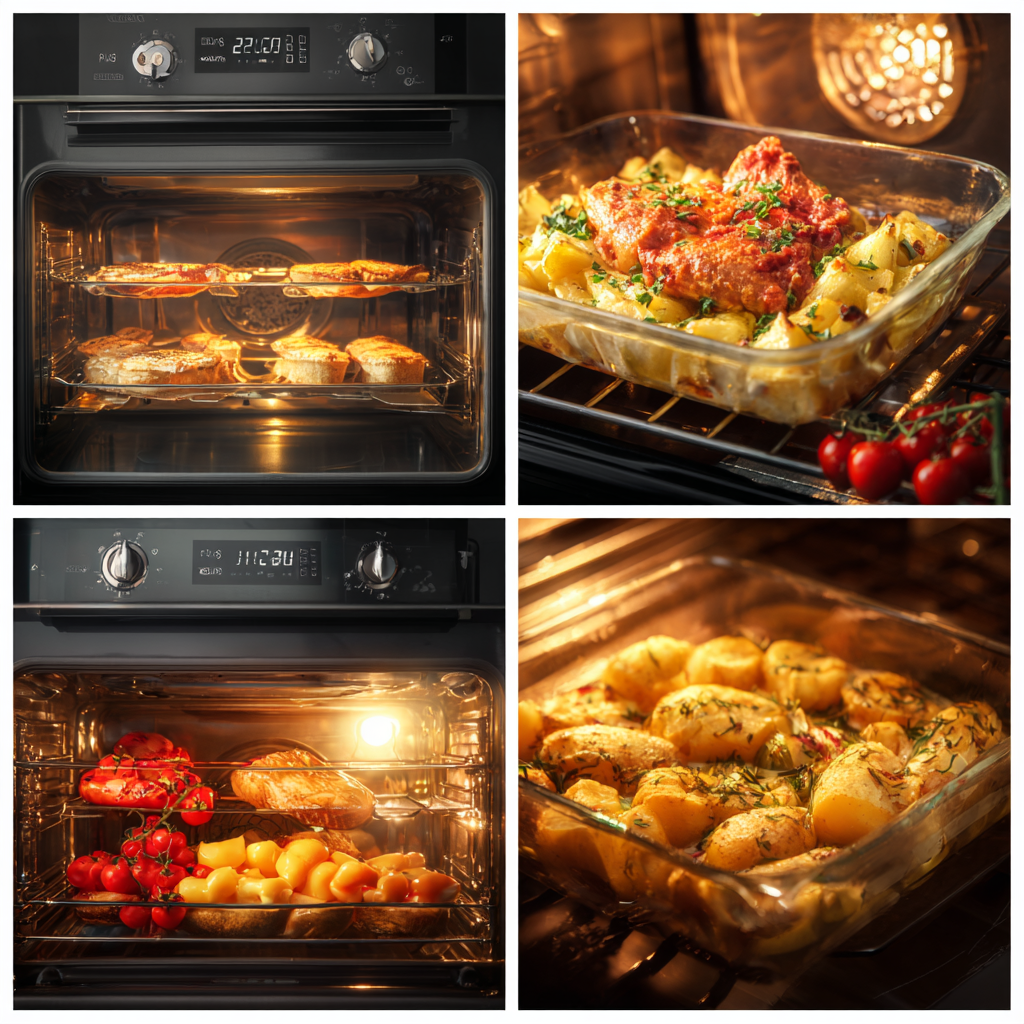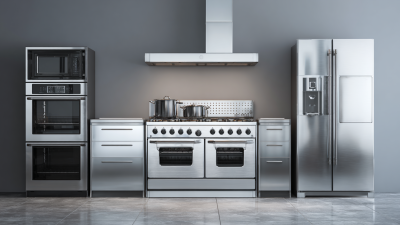
When it comes to selecting the right material for your oven, toughened glass emerges as a prime candidate due to its superior strength and durability. In the realm of kitchen appliances, toughened glass for ovens not only ensures safety but also enhances performance, making it an essential consideration for any homeowner or culinary enthusiast. As we approach 2025, advancements in technology have led to a myriad of options available on the market, each boasting unique features and specifications.

Choosing the best toughened glass for your oven requires careful consideration of various factors, including heat resistance, thickness, and ease of cleaning. With the increasing popularity of modern kitchen designs and energy-efficient appliances, understanding the properties and benefits of toughened glass is crucial for making an informed choice that complements your cooking needs.
In the following sections, we will explore the key aspects to consider when selecting toughened glass for your oven, ensuring that your decision is guided by both functionality and aesthetics.
When selecting toughened glass for your oven, it is crucial to understand the heat resistance ratings that correlate with the glass's ability to withstand high temperatures without breaking. Toughened glass is engineered through a process that increases its strength, making it particularly suitable for environments exposed to significant heat fluctuations. Assess the manufacturer's specifications carefully; look for details on temperature thresholds and resistance to thermal shock. Typically, quality toughened glass can handle temperatures up to 300°C (572°F) or more, depending on the specific type.
In addition to heat resistance ratings, consider other factors such as thickness and thermal insulation properties. Thicker glass tends to provide better durability and efficiency, minimizing heat loss and enhancing energy savings in your cooking. Furthermore, ensure that the glass is certified for safe use in kitchens and complies with industry safety standards. By prioritizing these selection criteria, you can choose the most effective toughened glass that meets your oven's needs and enhances your cooking experience.
When selecting toughened glass for your oven, understanding its thermal shock resistance is crucial. Toughened or tempered glass must withstand sudden temperature changes, making it ideal for high-heat environments. The key metrics to consider include the glass's thickness, the quality of its tempering process, and its resistance to thermal stress. Thicker glass typically offers better durability, while high-quality tempering ensures that the glass can endure extreme heat without shattering.
**Tips:** Always check the manufacturer's specifications for thermal shock resistance ratings to ensure that the glass can handle sudden heat fluctuations. Additionally, opt for glass that has undergone rigorous quality testing and adheres to industry standards, as this guarantees better performance in your cooking environment. Remember, investing in high-quality toughened glass is essential for both safety and efficiency in your culinary adventures.
Choosing the right toughened glass also involves considering its aesthetics and functionality. Ensure that the design complements your oven while providing the necessary transparency for monitoring your cooking. Look for options that feature easy cleaning properties, as this can save you time and effort in maintaining a pristine kitchen appearance.
When selecting toughened glass for your oven, understanding the impact resistance standards is crucial. Toughened glass, also known as tempered glass, is significantly stronger than regular glass due to its unique manufacturing process, which involves heating and rapid cooling. According to data from the International Glass Association, toughened glass can withstand impacts up to five times greater than standard glass, making it ideal for high-temperature environments like ovens.
Impact resistance is typically assessed using the ANSI Z97.1 and ASTM C1048 standards, which evaluate the glass's ability to endure sudden forces. For instance, the ANSI/ASTM standards specify that toughened glass should withstand impacts of up to 1.5 joules per centimeter without breaking, ensuring safety during everyday use. Additionally, certified toughened glass must pass rigorous testing to ensure it meets or exceeds these impact resistance criteria, providing peace of mind for consumers choosing products for their kitchens. Selecting glass that adheres to these standards guarantees better durability and safety in your cooking environment.
| Glass Type | Thickness (mm) | Impact Resistance (J) | Temperature Resistance (°C) | Common Uses |
|---|---|---|---|---|
| Toughened Soda-Lime Glass | 4 | 50 | 250 | Oven Doors, Cooktops |
| Borosilicate Glass | 5 | 60 | 500 | Baking Dishes, Laboratory Equipment |
| Ceramic Glass | 6 | 70 | 800 | High-Temperature Applications |
| Laminated Toughened Glass | 8 | 80 | 300 | Oven Windows, Safety Applications |
 When selecting toughened glass for your oven, understanding the coatings and treatments available is crucial for optimal performance. Recent studies from the Glass and Glazing Federation indicate that properly treated oven glass can endure temperatures exceeding 400 degrees Celsius, showcasing the importance of enhanced thermal resistance. These treatments not only contribute to safety by reducing the risk of shattering but also improve energy efficiency by minimizing heat loss.
When selecting toughened glass for your oven, understanding the coatings and treatments available is crucial for optimal performance. Recent studies from the Glass and Glazing Federation indicate that properly treated oven glass can endure temperatures exceeding 400 degrees Celsius, showcasing the importance of enhanced thermal resistance. These treatments not only contribute to safety by reducing the risk of shattering but also improve energy efficiency by minimizing heat loss.
Various coatings can be applied to oven glass to further enhance its functionality. For example, low-emissivity (low-E) coatings can reflect heat back into the oven, improving energy efficiency by up to 30% compared to untreated glass. Additionally, anti-fogging treatments are becoming increasingly popular, particularly in consumer ovens, as they help maintain visibility during cooking, making it easier for users to monitor their food without opening the oven door.
As the demand for high-performance cooking appliances grows, manufacturers are investing in advanced glass technologies that combine these protective features, aligning with market trends identified in the 2023 Glass Performance Report, which highlights the industry shift towards more resilient and efficient glazing solutions in kitchen appliances.
 When selecting toughened glass for your oven, a cost analysis is paramount in achieving a balance between quality and budget. Toughened glass, known for its durability and heat resistance, comes in various grades and prices. Understanding the material standards is crucial; while high-grade toughened glass offers excellent thermal shock resistance and safety features, it also comes at a premium. Analyzing the performance specs against the price will help you make an informed decision that fits within your budget constraints without compromising on safety.
When selecting toughened glass for your oven, a cost analysis is paramount in achieving a balance between quality and budget. Toughened glass, known for its durability and heat resistance, comes in various grades and prices. Understanding the material standards is crucial; while high-grade toughened glass offers excellent thermal shock resistance and safety features, it also comes at a premium. Analyzing the performance specs against the price will help you make an informed decision that fits within your budget constraints without compromising on safety.
Moreover, it's important to consider the long-term benefits. Investing in high-quality toughened glass might incur a higher initial expenditure but will likely save you money on replacements and repairs in the long run. Additionally, consider the potential energy savings that come from using better insulation materials, which can lead to reduced energy consumption. Evaluating the total cost of ownership, rather than just the upfront price, allows consumers to make smarter choices that align with their needs and financial situations.





